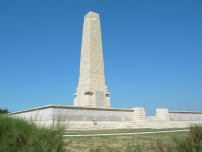| First Name: | Rene | Last Name: | GAUTIER | |
|---|---|---|---|---|
| Date of Death: | 08/08/1915 | Lived/Born In: | Spitalfields | |
| Rank: | Corporal | Unit: | Gloucestershire7 | |
| Memorial Site: | 1. Spitalfields, Christ Church Memorial 2. Helles Memorial, Gallipoli | |||
Current Information:Born-Spitalfields
Gallipoli 1915 On 25 April, British, Australian and New Zealand forces landed on the Gallipoli peninsula. The plan was that these forces would soon defeat a demoralised Turkish army, knock Turkey out of the war, open up the Mediterranean to the Russian navy and threaten Austro-Hungary from the south. None of these things were achieved despite nine months of hard fighting in terrible conditions. It was a heroic failure. By July, 1915, and after much fierce fighting, stalemate had set in at Gallipoli both at Cape Helles where the British and French had landed and at Anzac Cove where the Australian and New Zealand Corps were unable to break out of their beach head. Fresh troops were needed and they were on their way in the shape of four divisions from Britain and things were put on hold until they arrived. The plan for August was for a landing at Suvla Bay to the north of Anzac Cove whilst at the same time, the ANZAC Corps, reinforced by some of the new British troops would effect a breakout from Anzac Cove and establish a line across the peninsula. Whilst this was going on the troops in the south at Helles would stage a number of diversionary attacks. But it all went horribly wrong and much of the reason for this can be explained by inadequate planning and leadership. Nobody seemed to know what they were supposed to be doing and Lieutenant-General Stopford, in charge of the Suvla landings was particularly out of his depth. The landings at Suvla failed to link up with the forces at Anzac and the breakout from there did not happen despite valiant efforts by all concerned. The loss of life on all fronts was again enormous. L.A. Carlyon’s excellent book “Gallipoli” gives a superb yet chilling account of the events. The 13th Division, including 7th Gloucestershire of 39 Brigade, arrived at Helles in July, 1915. 13th Division had been chosen to assist in the breakout from Anzac Cove during the August attack and on 3rd August they moved to this location in preparation for this. On 6th August, the day of the Suvla landings, 39 Brigade were in reserve and on the following day, 7th August, they were given the task of capturing Hill Q and the strategic heights of Chunuk Bair. However the terrain they had to cross was extremely difficult and confusing with deep gullies and steep ridges branching off in all directions and in the confusion of orders and counter-orders, 7th Gloucestershire became separated from the rest of the brigade and ended up reinforcing the New Zealand Brigade on Rhododendron Spur. On 8th August, along with the Wellington battalion of the New Zealand Brigade and the 8th Welsh battalion, the pioneer battalion of 13th Division, they attacked Chunuk Bair. Zero hour was fixed for 3.30am but there were delays and dawn was breaking when they finally began the assault. Unexpectedly, the enemy had abandoned the hill and the New Zealanders in front reached the top without a shot being fired. But this happy state of affairs was not to last long. As soon as the Turks, still occupying nearby peaks, saw what was happening they opened up from both flanks on Chunuk Bair and 7th Gloucestershire, followed by 8th Welsh, both of who were still climbing to the summit, were hit by this fire and suffered badly. The two leading platoons of 7th Gloucestershire reached the western shoulder of the summit where they found some cover while the rest of the battalion descended into the valley of the Sazli Beit stream and then came up on the other side of the Wellingtons. 8th Welsh, following behind, suffered even more heavily in this, their baptism of fire and only a few made it to the top to extend the line to the right. These three battalions, or what was left of them, held on in these exposed positions for the rest of the day, hardly daring to move a muscle for fear of attracting Turkish attention and it was not until that night that other units reached them and they were able to withdraw to the Apex. The Wellingtons were reduced to 2 officers and 47 men while both British battalions had around 400 casualties each. One of these was Rene Gautier of 7th Gloucestershire. |
||||
| « Back to Search Results | ||||
| If you think any of the information shown here is incorrect, Click Here to submit your amends and comments | ||||




